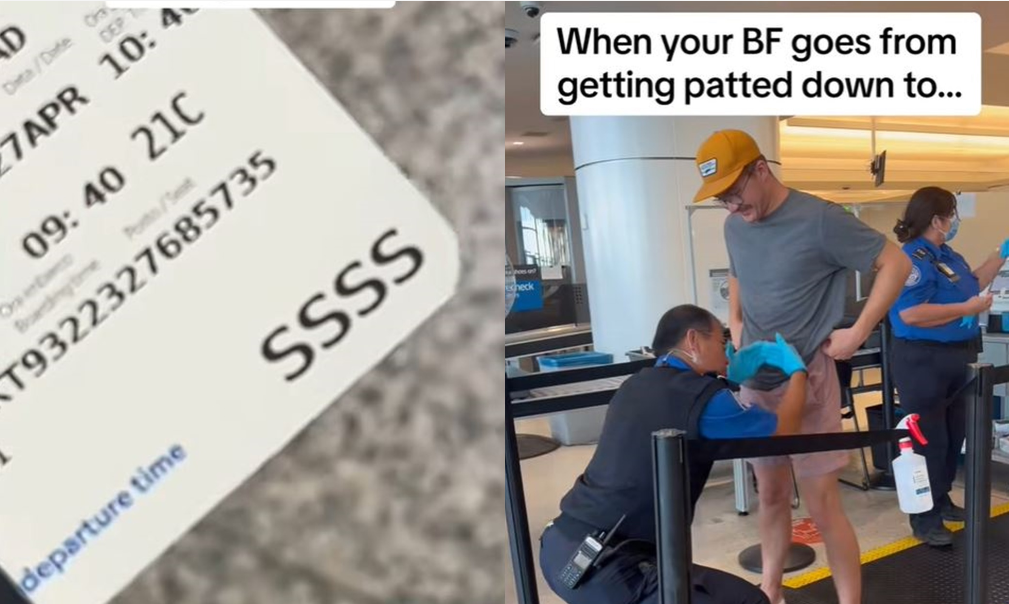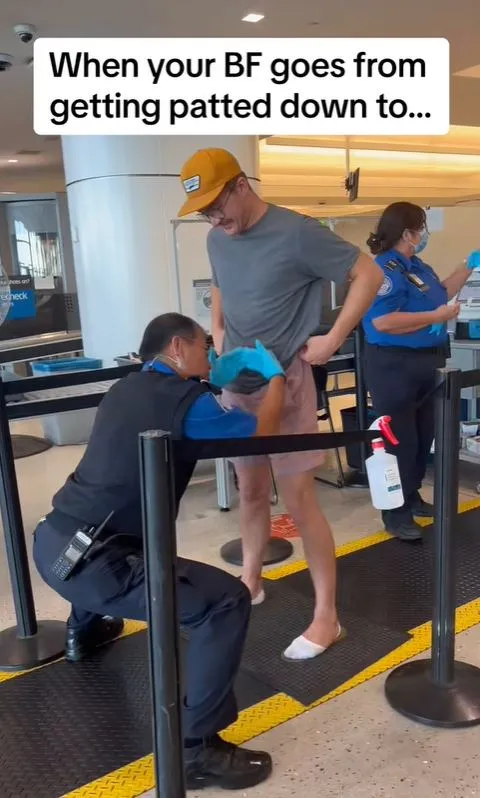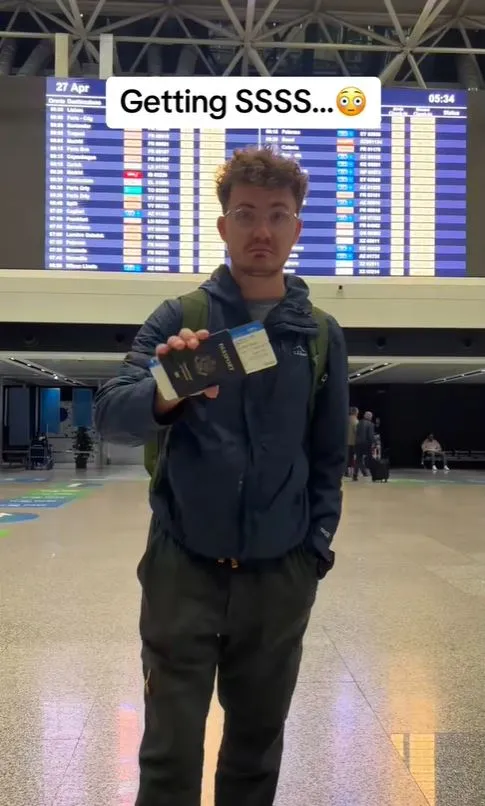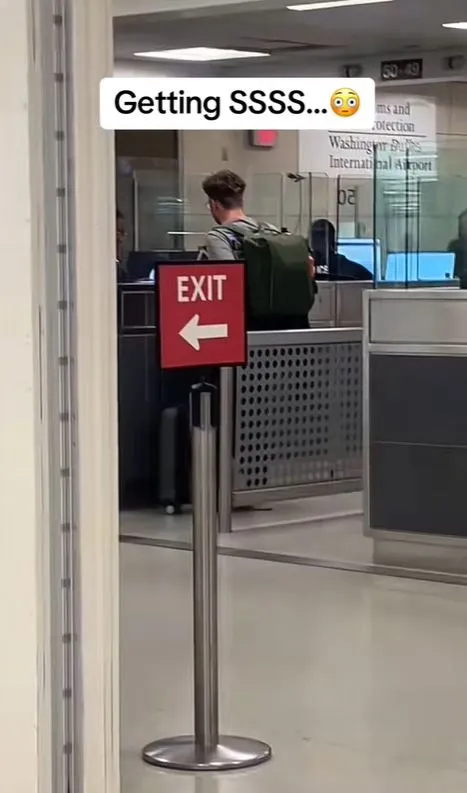Air travel can be a nerve-wracking experience, and a surprise on your boarding pass can make the process even more stressful. One of the most dreaded codes to see on your ticket is the ‘SSSS’. Travelers who spot these four letters often find themselves subjected to a more thorough screening process at the airport, leading to longer wait times and increased scrutiny. But what does this mysterious code mean, and why do some passengers get selected for it? Let’s dive into the hidden meaning of the ‘SSSS’ code and why it’s important for travelers to understand it.

What Does ‘SSSS’ Mean on Your Boarding Pass?
The ‘SSSS’ code stands for Secondary Security Screening Selection, a designation that flags passengers for additional security measures during the boarding process. This code is assigned to individuals who have been randomly selected (or flagged due to certain patterns) by the Transportation Security Administration (TSA) for a more extensive screening.
While it may seem like an arbitrary decision, the TSA’s selection process is based on various factors, some of which are completely random. In other cases, a passenger’s profile, travel patterns, or other criteria may trigger the need for extra scrutiny. The ‘SSSS’ code essentially signals that the passenger will be subjected to additional checks designed to ensure safety during air travel.

The Process of Secondary Security Screening
If you see the ‘SSSS’ code on your boarding pass, it’s time to prepare for a more detailed airport experience. The secondary screening process involves a range of procedures aimed at further investigating the passenger’s belongings and their travel intentions. Some of the key components of this process include:
- Thorough Baggage Inspections: Your carry-on bags will be fully inspected. Expect to remove everything from your bag, including electronic devices, toiletries, and any other personal items. TSA agents will examine every single item closely.
- Swab Tests for Explosives: In some cases, TSA agents may swab your belongings or your hands for traces of explosives. This is part of their protocol to detect any harmful substances that may not be immediately visible.
- Digital Device Inspections: One of the more invasive aspects of secondary screening is the inspection of digital devices such as laptops, tablets, and phones. Passengers may be asked to power on their devices to ensure they are functioning properly and to examine their contents for any security concerns.
While these additional steps are inconvenient, they are designed to ensure the safety of all passengers and to prevent any potential threats from boarding the plane.
VIDEO: What SSSS on Your Boarding Pass REALLY Means
Jordyn Verzera Shares Her Experience with ‘SSSS’ on TikTok
Travel influencer Jordyn Verzera recently shared her partner’s experience with the ‘SSSS’ code in a viral TikTok video. In her post, she detailed the lengthy and invasive screening process her partner, JT Mocarski, went through after his boarding pass was marked with the dreaded ‘SSSS’.
Verzera explained that the TSA agents separated his belongings from hers, inspected every item in his bags, and even asked him to power on his laptop for inspection. She said, “On flights to/from the US, you can get ‘randomly’ selected to undergo a much higher level of security. For my partner, this meant separating all of his things from mine, pulling absolutely everything out of his bag, swabbing everything, and then making sure that his laptop turned on (so that they could inspect it).”
Her video not only shared her partner’s frustrating experience but also sparked widespread conversation among fellow travelers. The video quickly went viral, and many people chimed in with their own stories of being flagged for extra screening.

Travelers Share Their Experiences: The Frustrations of ‘SSSS’
In the comment section of Verzera’s TikTok video, viewers began sharing their own encounters with the ‘SSSS’ code. Many travelers revealed how frequently they’ve been selected for secondary screening, with some noting that it has happened every time they fly. One commenter recalled TSA agents scanning their phone and even making copies of personal messages and photos. Another user explained that they were often flagged for extra screening when flying solo as a minor.
Some travelers expressed confusion about the algorithm behind the selection process, noting that they had been flagged despite having clean records or being frequent fliers. One veteran and long-time federal employee voiced frustration at being selected every time, despite their background in security-related work.
These shared experiences highlight the uncertainty and frustration that can come with the ‘SSSS’ code. While some see it as an inconvenience, others question whether there’s an underlying system for how passengers are chosen.
How to Handle ‘SSSS’ Screening at the Airport
If you find yourself facing additional screening due to the ‘SSSS’ code, it’s important to remain calm and prepared for a potentially lengthy process. Here are some tips on how to handle secondary security screening and make the experience as smooth as possible:
- Arrive Early: Since you can expect to go through a more thorough screening, it’s wise to arrive at the airport with plenty of time before your flight. This will give you a buffer to deal with any delays caused by the additional checks.
- Follow Instructions Carefully: TSA agents will give specific instructions for how to proceed through the screening process. Be sure to follow these directions carefully, whether it involves removing all your items from your bag, powering on your devices, or submitting to a swab test.
- Stay Calm and Cooperative: While it can be frustrating to go through extra security, staying calm and cooperative will help expedite the process. TSA agents are simply doing their job to ensure everyone’s safety, and being polite and patient will make the experience more manageable.
- Prepare for Extra Scrutiny of Electronic Devices: If your devices are inspected, be prepared to power them on and potentially explain their contents. If you have any sensitive or private information on your devices, consider backing up your data in advance to avoid any issues during the inspection.
VIDEO: You don’t want SSSS on your boarding pass!
Why Does the TSA Use the ‘SSSS’ Code?
The ‘SSSS’ code is part of the TSA’s efforts to maintain a high level of security at airports. The increased scrutiny that passengers with this code undergo is part of a system designed to minimize risks and ensure that no potential threats make it onto the plane. Although the process may feel inconvenient, it’s part of the TSA’s broader commitment to air travel safety. It’s important to remember that secondary screening is typically random and not necessarily a reflection of any wrongdoing on the part of the traveler.

Conclusion: Navigating the ‘SSSS’ Code with Confidence
While spotting the ‘SSSS’ code on your boarding pass can certainly be nerve-wracking, understanding its purpose and knowing how to handle the extra screening process can help make the experience less stressful. Secondary security screening is an important part of air travel safety, and while it may add time to your airport experience, it’s ultimately designed to keep everyone safe.
By staying calm, arriving early, and following TSA instructions, you can navigate the secondary screening process smoothly and continue on your way. The ‘SSSS’ code may be an inconvenience, but it’s just one part of the larger effort to ensure that air travel remains as safe and secure as possible for everyone.